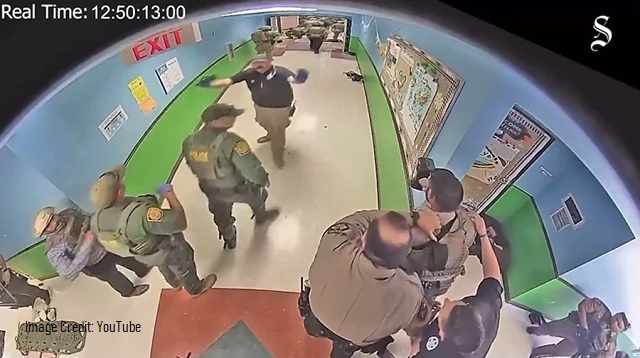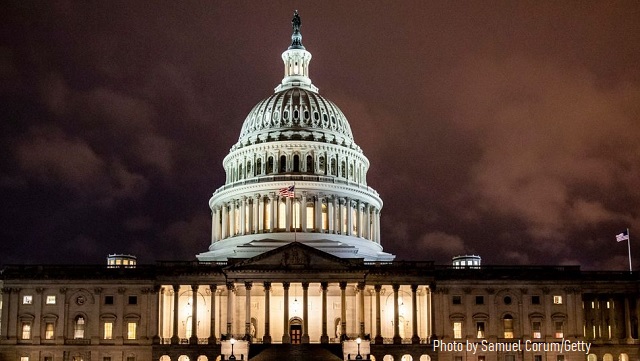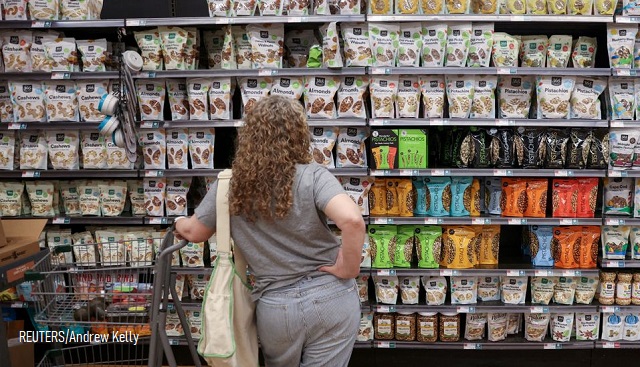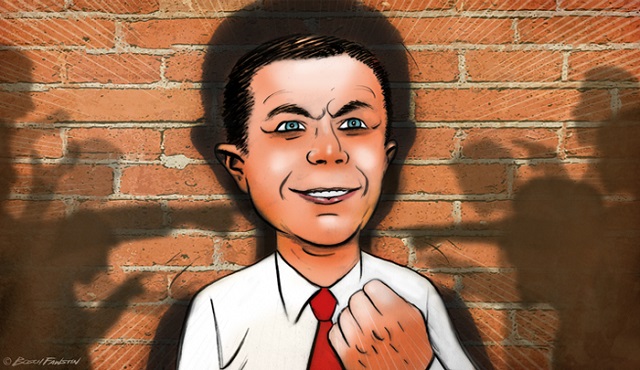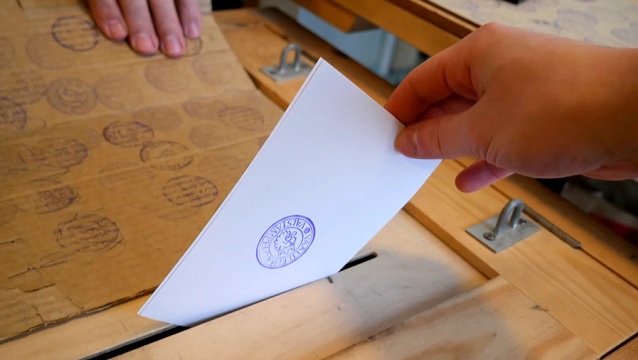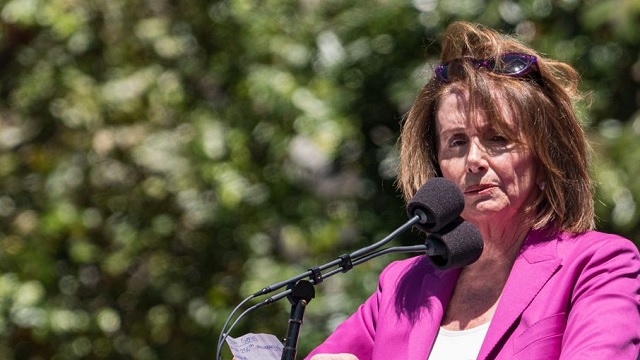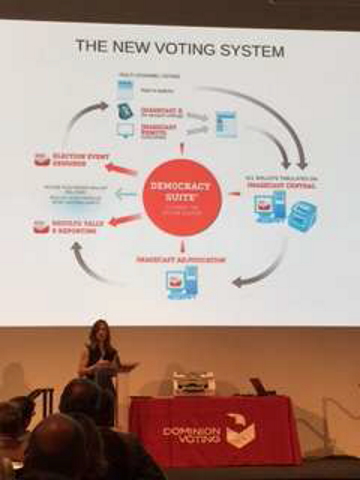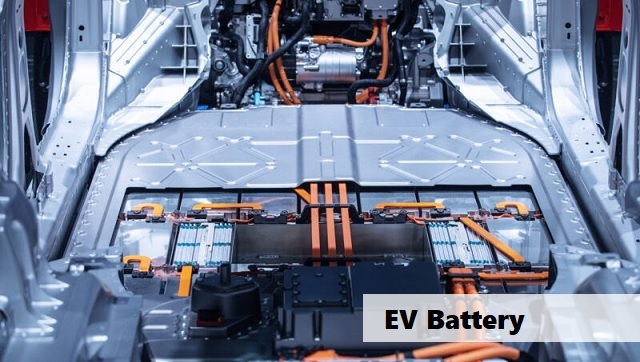
Violent crime is up. Burglaries and robberies are down. And progressive cities like Portland, Oregon are hiring more police. What’s going on?
For 36 years, Conrad Casarjian has owned and operated his Massachusetts jewelry store—the Gold-n-Oldies store on Revere Beach Parkway in Everett. He said he’d never experienced a burglary like he did in December when thieves smashed into his shop and made off with a handful of jewelry items.
“The break-in crew shattered the safety glass in the front door, must have reached in with a hammer, broke into one of the showcases, and made off with, at most, a few gold rings,” Casarjian told a local TV station.
The “smash and grab” was just one of a string of robberies in the area that police in Everett are investigating, and robberies like these appear to be happening in other parts of the country as well.
A couple weeks before Casarjian was robbed, CNN reported on a “wave of ‘smash-and-grab’ crimes” plaguing US cities.
The crime spree included a Nordstrom department store in Los Angeles where thousands of dollars of merchandise was stolen by at least 18 suspects, as well as a Nordstrom near San Francisco involving some 80 suspects. These burglaries followed hits in the area on Louis Vuitton, Burberry, and Bloomingdale’s department stores, as well as a Walgreens.
As Casarjian’s experience shows, the “smash and grabs” are not isolated to the Golden State. A Louis Vuitton store in Chicago, for example, also saw a dozen people storm in and steal $120,000 worth of merchandise. In Minnesota, meanwhile, organized thieves fell on Best Buy stores in Maplewood and Burnsville, suburbs of Minneapolis.
These incidents have left many wondering: Are we witnessing a nationwide surge in crime?
Police in Chicago have released CCTV footage of the moment a number of people ran in to a Louis Vuitton store and grabbed designer bags.
Latest videos here: https://t.co/O6B3yneE6C pic.twitter.com/cNb5bXOZy5
— Sky News (@SkyNews) November 22, 2021
How To Read Data
Before wading into matters of criminal justice, it’s important to acknowledge a few realities about crime data. First, we don’t have immediate data. It takes time for information to be collected and analyzed, which means we won’t have aggregate data on the extent of last year’s “smash and grab” crime sprees until later this year.
Second, there is no standardized system for collecting data in the US. The vast majority of crimes are never even reported to police (often due to a lack of trust in the system). And the data we do have rely on reporting from local departments—if they choose to participate. (According to the Pew Research Center, NIBRS, one of several tracking systems, received data from less than half of law enforcement departments).
Statistics can give us a glimpse of general trends, but the data are varied, incomplete, and prone to manipulation—and not just by politicians. Police unions are powerful lobbyists who are adept at using the media to create fear so as to secure higher pay and more power for themselves. Likewise, retail trade groups have been known to use similar tactics.
All that to say, when dealing with crime statistics in the US—a vast country with a population of 330 million and nearly 39,000 general-purpose governments—it’s important to admit we’re never dealing with the full picture.
‘A Tsunami of Lethal Violence’…But Less Crime?
As many know, 2020 was a year that saw a vast increase in violence. What is less known, and perhaps counterintuitive, is that it was not a year of crime.
“There was no crime wave—there was a tsunami of lethal violence, and that’s it,” Philip Cook, a crime expert at Duke University, recently told The Atlantic, citing preliminary FBI statistics.
This tsunami of violence included a 30 percent increase in the murder rate, the largest ever recorded. (About 21,500 murders took place, roughly 6.5 for every 100,000 people). The most common form of violent crime, aggravated assault, also increased by 12 percent. Not all violent crime increased, however; rape saw no statistical change and robberies and burglaries fell.
Meanwhile, FBI data suggest many non-violent crimes—including burglary and larceny—decreased in 2020.
In a normal year, such a divergence would appear quite strange, but considering the nature of the pandemic, there appears to be some logic to it. More people were home than normal, which might explain why burglaries fell.
Others, however, are less sure that crime is truly down. Robert Boyce, a retired chief of detectives for the New York Police Department, told ABC police have backed off arresting suspects they’d normally apprehend.
“Nobody’s getting arrested anymore,” Boyce said.
This might explain why FBI crime data show total arrests nationwide plummeted 24 percent in 2020 even as violence surged.
David Graham, writing at The Atlantic, says it’s possible the FBI’s statistics are simply “wrong,” noting that 2020 saw reports of drug crimes plummet even as drug overdoses reached an all-time high—“suggesting that drug arrests, not use, had changed.”
This is why some reject the idea that we’re witnessing a decrease in crime.
“It’s disingenuous in the face of a historic 30 percent rise in homicide to say that overall crime is down, simply because the majority of crime is low-level misdemeanors,” Thomas Abt, a senior fellow at the Council on Criminal Justice and a former Justice Department official, told The Atlantic.
Whether one believes Cook or Abt, it should be noted that even with 2020’s surge in murders, the murder rate remains well below the rates experienced in the 1970s, 80s, and 90s. The percentage increase is only so high because crime was previously at historic lows.
Murders saw a historic surge in 2020 and continued to rise in 2021.
BUT the murder rate is still well below the rate in the early 1990s.
Question for readers: What’s behind the recent surge in violence? pic.twitter.com/Vf9LoDcMIi
— Jon Miltimore (@miltimore79) March 2, 2022
The Role of Defunding the Police
Conservatives have been eager to tie the “defund the police” movement to increases in crime. There’s no evidence that things are that cut and dry, at least if one interprets “defund” to mean smaller police departments.
While it’s true violent crime is up in many cities, the reality is few cities ever passed “defund” policies. Some made budget cuts, many quickly restored them. To date, no one has gotten rid of their police department. In fact, some police unions have already used the Defund the Police talking point to secure pay increases.
While the Defunding movement failed to actually abolish police, they may have succeeded in changing how police operate. San Francisco, for example, has largely abandoned enforcement of shoplifting. The lack of enforcement prompted New York Times journalist Thomas Fuller, who recently moved to San Francisco, to ask a grocery store clerk, “Is it optional to pay for things here?”
The shoplifting was so bad it prompted Walgreens to close five Bay area locations.
“Organized retail crime continues to be a challenge facing retailers across San Francisco, and we are not immune to that,” Walgreens spokesman Phil Caruso said following the decision.
It’s not just San Francisco, either. In New York City, Manhattan District Attorney Alvin Bragg angered many—citizens and police alike—when he issued a Jan. 3 memo instructing prosecutors to downgrade most felony property crimes (including violent ones) to misdemeanors.
It should come as little surprise that lighter punishments and a lack of enforcement for such property crimes would incentivize the practice. Studies have shown that efforts to remove or reduce penalties for property crimes have led to increases in those kinds of offenses.
This is not the only example of cities choosing to not prosecute individuals committing property crimes. Cities such as New York and St. Louis decided to drop criminal charges against the vast majority of alleged looters. Such scenarios raise the possibility that, in some places at least, police have simply stopped arresting suspects for many crimes. Their motivation? Some will say it’s because prosecutors stopped pressing charges, but that doesn’t really bear out in the data. It seems more likely that many police departments and officers are acting maliciously, pulling back and not enforcing property crime violations so they can lobby for larger budgets and ward off reform efforts.
Even if one accepts the idea that violent property crimes are on the rise—again, we don’t yet have data for 2021 and the FBI’s preliminary data for 2020 don’t show a surge—it’s unclear what role Defund the Police played, if any. It seems just as likely that pandemic policies, including lockdowns and school closures, are the primary cause. These policies shut teens (who are the most likely demographic to commit crime) out of schools, community programs, and jobs that would have taken up their time. Many of these programs focus on keeping teens out of gangs and other illicit activities and help them access skills-training and jobs.
Programs that dealt with mental health and addiction were also impacted by lockdowns, meaning many have not gotten the healthcare they need to be in their right mind. The economic uncertainty created by these policies is also likely a factor, as we know poverty can play a major role in criminality.
If “Defund the Police” did play a role, it likely stemmed from decisions of police brass and city councils—who opted to not pursue some violent crime, perhaps incentivizing such crimes—and less from budget cuts and reduced police departments.
Will Hiring More Police Help?
For those hoping to see violence rates return to normal after a year of unrest, 2021 proved a disappointment.
At least a dozen US cities set new homicide records last year. Some police officials say the violent crime is the worst they’ve ever seen.
“It’s worse than a war zone around here lately,” Capt. Frank Umbrino of New York’s Rochester Police Department said in December after the city broke its 30-year-old annual homicide record with 7 weeks to go in the year. “We’re extremely frustrated. It has to stop.”
While such data are of course saddening, claims that US cities are war zones are hyperbolic. Rochester had about 80 murders last year. This is hardly exemplary, but it’s still far below the most dangerous cities in the world, and more than 50 percent lower than St. Louis on a per capita basis.
As the FBI itself points out, “Fatal violence is relatively rare and often intensely personal: according to FBI data, many American homicide victims know their killers.” This is why much of this increase has come from communities that were already struggling with violent crime pre-pandemic, some communities continue to struggle more than others with violence. Americans remain very unlikely to die by homicide.
Nevertheless, many cities, including lefty-capital Portland, Oregon, are now hiring more police. It’s unclear, however, if these “re-fund the police” movements will have their desired effect.
As the New York Times recently pointed out, the evidence that adding more police reduces violent crime is mixed. Aaron Chalfin, a criminologist at the University of Pennsylvania, told the paper that research shows crime falling after police are added about 54 percent of the time.
“Crime goes up and down for a million reasons that are completely independent of the police,” Dr. Chalfin said. “But we know, on average, if you look across many cities for many years, there is an effect.”
Furthermore, we know that the biggest deterrent to crime is the assuredness one will be caught for their crime and punished. In America, it’s a pretty good bet that won’t happen. Police are very bad at solving crimes in the first place, and during the pandemic it appears many pulled out of certain areas altogether.
All that to say, recent crime statistics are hardly a reason to increase the size of police departments or give them more money and power.
Chicken or Egg?
It is commonly said that poverty causes crime. But as economist Roger M. Clites has observed, the opposite is also true: crime causes poverty.
“It is not just others who are adversely affected by criminals. Perpetrators themselves lose ground economically. A large portion of people charged with criminal activity are relatively young. Their criminal behavior harms them in several ways,” Clites explained. “They may spend time incarcerated when they could have been gaining employment experience. Their criminal record may hamper them in obtaining future employment. They develop attitudes and habits that are detrimental to participation in the workplace. For these reasons many criminals condemn themselves to poverty.”
This is why there is widespread agreement that crime is bad for everyone, perpetrators and victims alike. Solutions are difficult, however, because crime is complex.
Police unions would have you believe the solution is simple: hire more police! While it’s possible some departments suffer from a lack of police—police last year reported a retirement rate 45 percent higher than a typical year—there are better solutions than simply hiring more cops or creating a shiny new federal program.
Where Do We Go Now?
One thing is certain, throwing more money at this problem—or expanding the government’s control in any other way—is not the solution. We already spend between $81 billion and $180 billion per year on our criminal justice system depending on the calculations. And we spend that without seeing results, little of it goes to even solving violent crimes, much less preventing them.
If we truly want safer communities, some of the prescriptions are obvious. For one, reduce the number of laws on the books. Take non-violent and victimless crimes off the shoulders of police. Quit giving them excuses to focus their attention on ridiculous, money-making schemes like the War on Drugs. We need to change the incentive structures around policing by removing things like civil asset forfeiture that make them more inclined to chase petty criminals so they can take their money. Instead, police should function like the fire department—you come when there’s a true emergency and we call you, then you focus on putting out the fire.
In addition, we need to ensure school closures and lockdowns never darken our doors again so children, especially those in high-risk communities, get the education and resources they need to stay out of trouble.
We also need to pass common sense reforms, like bail reform, that ensure violent people are not released back into communities and that ensure people who are not threats are not pushed into a life of crime by a justice system that strips them of their livelihood before they’ve even been convicted.
Lastly, we need to enact real transparency and accountability in policing. It is inexcusable that they continue to hold communities hostage, refusing to do their jobs until they get a pay increase and a pat on the head. Instead, they need to earn their keep and only get pay raises when the violence rate decreases and they prove they’re doing their jobs.
AUTHORS
Hannah Cox is the Content Manager and Brand Ambassador for the Foundation for Economic Education.
Jonathan Miltimore is the Managing Editor of FEE.org. His writing/reporting has been the subject of articles in TIME magazine, The Wall Street Journal, CNN, Forbes, Fox News, and the Star Tribune.
Bylines: Newsweek, The Washington Times, MSN.com, The Washington Examiner, The Daily Caller, The Federalist, the Epoch Times.
EDITORS NOTE: This FEE column is republished with permission. ©All rights reserved.



